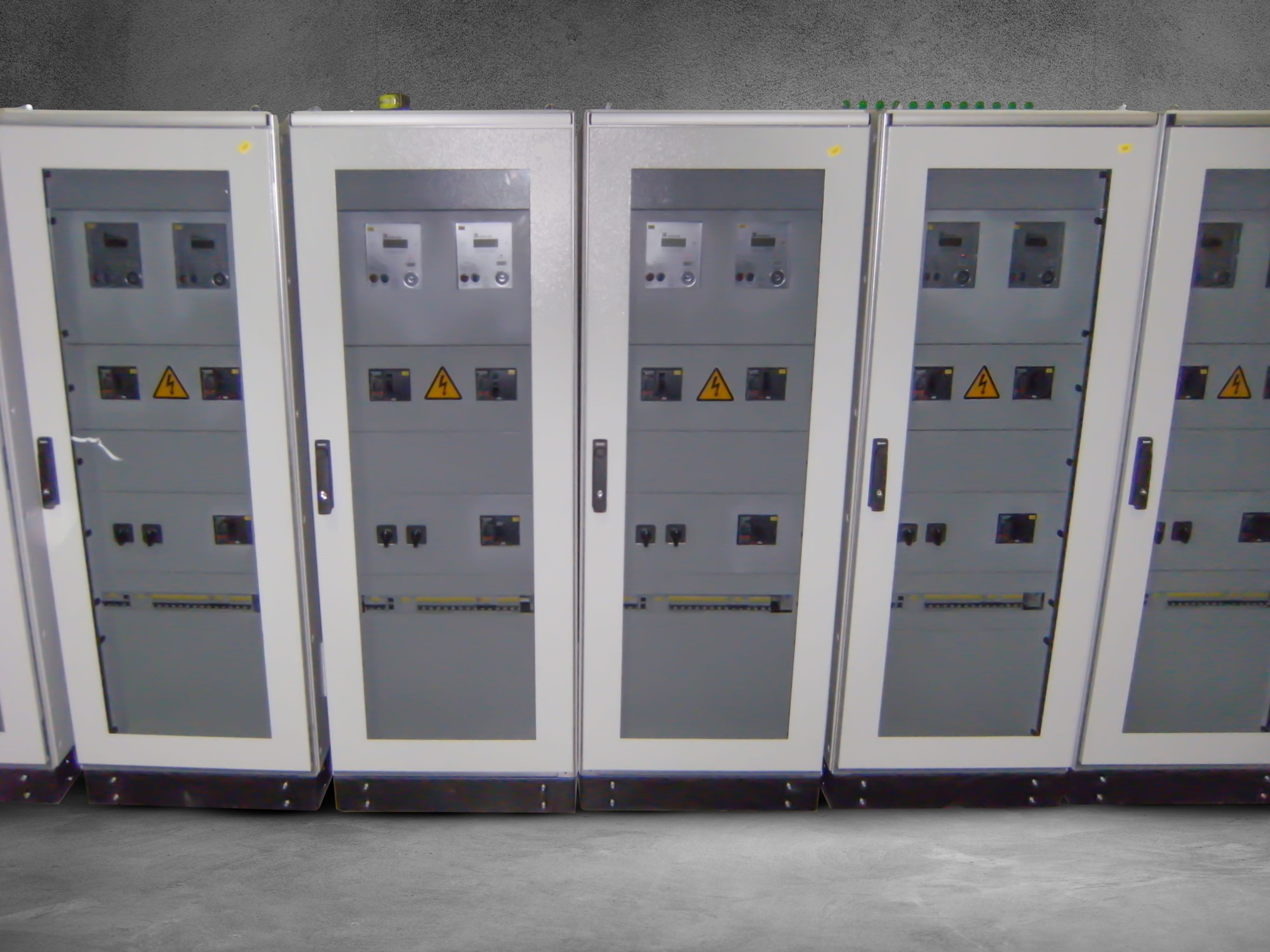
The sub-distribution panel is connected to the output of the main distribution panel. It is located on building floors and in different areas, responsible for distributing electricity. The loads in the building are connected to this panel. Compared to main distribution panels, it contains lower current devices. In transformer-based consumers, the transformer’s low-voltage output goes directly to the main distribution panel, and from there, energy is distributed to the sub-panels.
Since main distribution panels vary according to the size of the facilities, sub-panels also differ. The needs of companies, factories, and workplaces are evaluated, and the most suitable systems are installed. In this regard, the sub-distribution panel plays an important role in buildings.
What Are the Types of Electrical Panels?
Today, electrical panels come in different types, depending on the needs of factories and workplaces. The main types are:
- Main distribution panel: The facility’s main hub. Contains many circuit breakers and protection devices. Energy first enters the building from here.
- Sub-distribution panel: Connected to the outputs of the main panel. Placed on floors and in different areas. Smaller in size and contains low-current devices.
- Compensation panel: Used for reactive power compensation. Contains capacitor banks, harmonic reactors, contactors, protection elements, and reactive relays.
- MCC panel: Industrial-type panels used to control motor groups.
- Meter panel: Located at the building entrance where meters are installed. Works alongside main and sub-distribution panels.
- Machine panel: Special panels for machines such as compressors, generators, and fire systems.
- Construction site panel: Temporary panel used in construction sites to meet electricity needs.
- Fuse box: Small box in homes containing fuses and residual current devices. May have a plastic or metal body. Power comes from the sub-panel, then is distributed to lighting and sockets.
Sub-Distribution Panel Components
Sub-distribution panel components vary from reactive power meters to electrical fuses. The main ones include:
Reactive Power Meter
The reactive power meter is one of the important elements of the sub-distribution panel. Its types include:
- Electromagnetic meter
- Electronic meter
- Single-phase two-wire meter
- Three-phase four-wire meter
- Three-phase three-wire meter
- Standard meter
- Demand meter
- Multi-tariff meter
- Load profile recording meter
- Communication-enabled meter
Busbars
Busbars are units within the panel where electrical energy is collected and distributed. They also ensure the interconnection of different units. They are critical in distributing electricity generated in power plants into the system. In medium- and high-voltage panels, busbars also serve as phase, neutral, and ground conductors.
Electrical Fuse
The fuse protects conductors in both direct and alternating current circuits against overcurrents. It is used in homes, power plants, industries, and control panels. It consists of a small metal strip or wire mounted between terminals, enclosed by a protective casing.
The most commonly used types are:
- Knife-blade fuse: Used in high-current, high-power systems.
- Automatic circuit breaker: Preferred in sensitive circuits.
Circuit Breakers
Also known as breakers, they are essential components of the sub-distribution panel. They open and close the circuit while protecting the system against overloads and short circuits. They come in different types depending on current, voltage, and application. Compact breakers provide both magnetic and thermal protection.
Power Contactors
Power contactors are used to switch electrical circuits. Controlled electrically, they open and close circuits with low power. Unlike general-purpose relays, they can control high-current loads. They are commonly used in motors, heating, lighting, capacitor banks, and evaporator systems.

